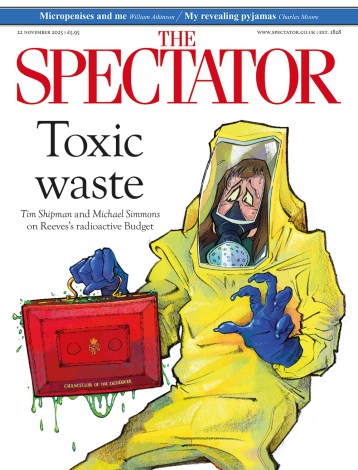Claire Keegan’s Booker-shortlisted Small Things Like These this year revived the tradition of Christmas short fiction. It’s a deftly done parable about cruelty and kindness in the run-up to Christmas, with actual snow – and tears.
Although Keegan’s novella eventually lost out to Shehan Karunatilaka for the Booker, it perhaps served a greater purpose than prizes: it was a reminder of the value of stories that connect us with our humanity, particularly around this time of year.
It was also a reminder that cultural consumption at Christmas needn’t merely be about overloading on films. There’s much to be said for the quiet refuge from festive overload offered by reading – and there’s much more to reading fiction with a festive theme than just A Christmas Carol. Here are a dozen suggestions:
Small Things Like These, Claire Keegan (2022)
See above. Bill Furlong is a husband, father and struggling small businessman in a small town in County Wexford in December 1985. His rounds on cold mornings bring him into contact with the local outpost of the infamous Magdalene Laundries and the suggestion of lost innocence and suffering there. Dickens gets a mention in this delicately told tale – and it fits the mood perfectly.
A Maigret Christmas, Georges Simenon (1951)
Simenon is a master of atmosphere, and this doesn’t disappoint. His lugubrious detective awakens on Christmas morning to find Madame Maigret bustling around with fresh croissants – but all he wishes for is black coffee and a freshly filled pipe. Cries of ‘Joyeux Noël’ echo around the surrounding tenements. There’s a dusting of snow. Then comes a knock at the door from two strangers in a state – and suddenly his day isn’t the quiet one he had planned.
Christmas Pudding, Nancy Mitford (1932)
She’s best known for the later The Pursuit of Love – televised again by the BBC last year – and Love in a Cold Climate, but Nancy Mitford’s early novels are rather overlooked, I think unfairly. This, her first, is the pick of them (along with perhaps Highland Fling). It features various toffs of different hue – from jaded bright young things to dour horse-and-hounds matriarch – coming together to spend Christmas at Compton Bobbin, a shambolic country house. It’s screamingly funny: as funny, for me, as Waugh.
A Village Christmas, Miss Read (1966)
Two elderly sisters are initially disapproving when a young family moves into their rural village and the parents strike them as slipshod, the children ill-brought up. But as Christmas approaches the lives of the two households become increasingly entwined. The nostalgic tone and the delicate sweetening of sentimentality make this an absolute treat.
A Child’s Christmas In Wales, Dylan Thomas (1950)
‘It was always snowing at Christmas. December, in my memory, is white as Lapland, though there were no reindeers. But there were cats.’ This prose piece grew out of a series of broadcasts made for the BBC during and just after the war. It’s a festive Under Milk Wood in miniature: reminiscences of village life a generation earlier seen through the sharp eyes of the boyhood Thomas before the booze blurred his vision.
A Christmas Memory, Truman Capote (1956)
Seven-year-old Buddy, his eccentric elderly female cousin and their dog Queenie are a team whose Christmas mission is to procure ingredients – including bootleg whisky – with which to bake a batch of fruitcakes that they will then send off to the likes of President Roosevelt. Quirky charm gradually gives way to a more elegiac tone, to sublime effect.
Mystery in White, J. Jefferson Farjeon (1937)
Farjeon was a prolific crime writer whose work was picked up for film by Hitchcock and others, but had been largely forgotten before this was reissued by the British Library in 2014 and became a surprise hit. Other reissues followed. Mystery in White opens with a packed train on Christmas Eve being derailed by an epic snowstorm – causing all the passengers to decamp and immediately stumble upon an atmospheric country house where all the lights are on but no one is at home. Not everyone gets out alive. Terrific fun.
The Cave Dwellers (also published as Christmas Story), Joseph Mitchell (1938)
A staff writer on The New Yorker for almost 60 years, Mitchell’s essays are like non-fiction Damon Runyon: homages to the great city and its colourful characters. None are more colourful than the couple here whom he discovers living a troglodyte lifestyle in Central Park during the Depression. With its depiction of a dysfunctional, alcoholic pair of lovers and their chaotic Christmas it could easily have been the inspiration for Shane MacGowan’s lyric in A Fairytale of New York. This is technically journalism rather than fiction but it reads like a perfect short story so sneaks on to this list.
Village Christmas, Laurie Lee
Penguin Classics raided the cidery vaults in 2015 to issue this collection of Lee pieces from various sources, padding it out with a bit of ‘and other notes on the English year’. Who cares if it’s a bit forced as it’s quite lovely: it’s effectively As I Walked Out One Midwinter Morning, all boyhood japes, Christmas trees cut yourself from Cotswold copses, roasting geese and plum puddings.
On the Banks of Plum Creek, Laura Ingalls Wilder (1937)
There are Christmas scenes in each of the Little House books and each is particularly charming: the simplicity, the rusticity, the girls’ gratitude for the humblest of treats. But the most memorable comes in this, the third of them: Pa heads into town on Christmas Eve to get some candy for his daughters. He thinks he can outrun a coming storm but instead gets caught in it. Blinded by the blizzard he missteps and falls into a deep bank of snow from which he cannot escape. It becomes an igloo where he is trapped for three days and nights until the storm finally clears. The candy keeps him alive, just.
The Dead, James Joyce (1914)
The final story in The Dubliners and the most affecting, it’s frequently cited as the best short story of all time – and it’s difficult to make a case against that. It begins with a big family Christmas supper party, with feasting and speeches, but then becomes steadily quieter as the guests drift away, into the night and into their own reveries, until all that is left at the end is the quietly falling snow.
The Nine Tailors, Dorothy L. Sayers (1934)
And, lastly, a gem for the post-Christmas period. The Nine Tailors opens on New Year’s Eve and climaxes the following Christmas. It’s set in the brilliantly evoked, often flooded winter Fenland where Lord Peter Wimsey stumbles upon a murder in the local church’s bell tower. It’s Sayers’s finest hour, her most complex and ambitious book and perfect reading for the bleaker days of late December.







Comments